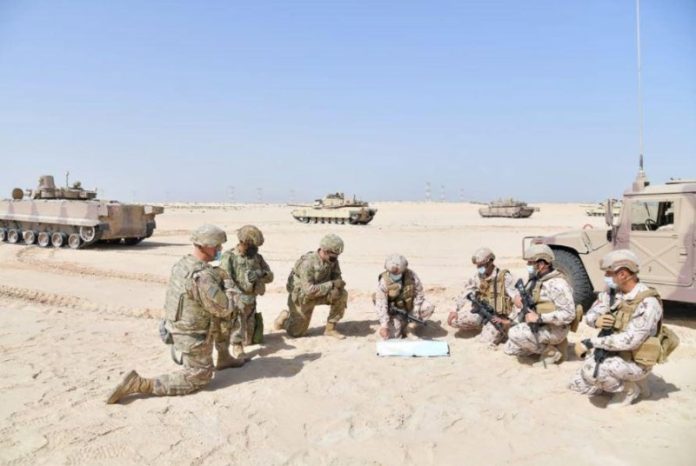Some Arab countries, including the United Arab Emirates, have increasingly restricted the US from using military facilities on their territory to launch retaliatory airstrikes against Iranian proxies, POLITICO reports.
The US has long stationed thousands of troops at facilities in the UAE, Kuwait, Oman, Qatar and other Middle Eastern countries, and the role of Arab countries in supporting US military activities has come under greater scrutiny since the war between Israel and Hamas.
The conflict has clashed the interests of Arab governments seeking to assuage their citizens’ anger toward Israel with their desire to help Washington repel Iranian-backed attacks.
The report that some countries are restricting access is based on information from a US official, a congressional aide and two Western officials who were granted anonymity to discuss the sensitive security issue.
Amid rising civilian casualties in the Gaza Strip, some Arab countries, especially those “trying to get closer to Iran,” are “increasingly restricting” the US and partners from conducting self-defence operations from their territory. This includes restrictions on retaliatory strikes against attacks in Iraq, Syria and the Red Sea, according to the official.
President Joe Biden has recently ordered numerous retaliatory air and missile strikes, including with US allies, against Iranian-backed threats in the Middle East.
The official also reports that some Arab countries are restricting basing and overflight access for assets involved in these retaliatory strikes. It is unclear how many countries are taking such measures. The reason why the UAE is doing this is that “they don’t want to appear like they’re against Iran and they don’t want to appear too close to the West and Israel for public opinion reasons.”
A spokesman for the UAE embassy declined to comment for this article.
Pentagon spokesman Major General Pat Ryder said the US military has “the capability to flow additional assets to the region to support regional deterrence efforts and provide options for a wide range of contingencies” when necessary.
“We also maintain the capability throughout the U.S. Central Command area of responsibility to defend our forces and conduct self-defence strikes at the times and places of our choosing,” Ryder said.
In October, US F-16 fighter jets retaliated against two sites in eastern Syria used by Iran’s Islamic Revolutionary Guard Corps and its supporters. Although the Pentagon at the time did not disclose where the planes came from, Al Dhafra is one of the closest sites in the region where F-16s are usually based.
In the meantime, a defence ministry spokesman denied the suggestion that there were tensions between the US and Emirates over the basing of the US military, noting that A-10 attack aircraft and armed MQ-9 drones had recently operated from Al Dhafra as part of operations to protect shipping in the Persian Gulf.
The Pentagon has stopped releasing details of its aircraft types, but strikes against the Houthis since January have been carried out by US Navy F/A-18 fighter jets from the aircraft carrier USS Dwight D. Eisenhower, which is in international waters.
In January, an Iranian-backed proxy attack killed three US soldiers at a small US outpost in Jordan, the US sent long-range B-1 bombers from Ellsworth Air Force Base in South Dakota, the Pentagon said.
“This was yet another demonstration that we maintain global strike capability, which means we can move quickly and flexibly to respond globally at the times and places of our choosing and that we’re not limited to just the aircraft that are in Central Command,” Ryder said.
In recent years, the fighting in Yemen has caused overflight support problems in the region. The US military, along with several international partners, has stepped up its operations in the Middle East as the effects of the war between Israel and Hamas have spread throughout the region.
